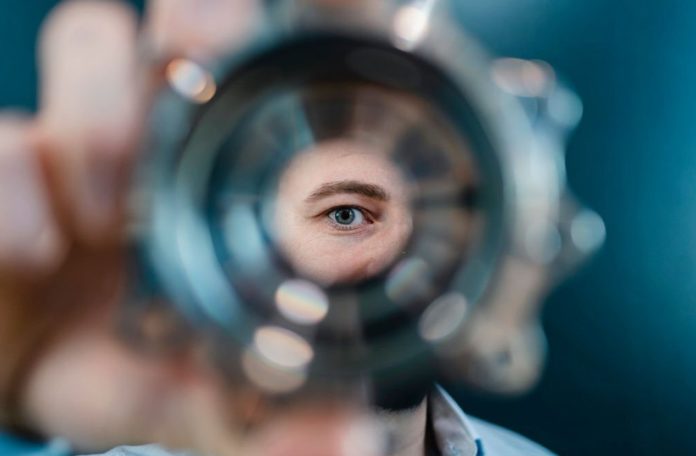A group of neuroscientists found that the size of our primary visual cortex and the amount of brain tissue we use to process visual information at certain places in visual space can tell how well we see. The new study published in Nature Communications today, demonstrates a novel association between brain structure and behavior.
“We have found that we can predict how well someone can see based on the unique structure of their primary visual cortex,” says main author Marc Himmelberg. “By showing that individual variation in the structure of the human visual brain is linked to variation in visual functioning, we can better understand what underlies differences in how people perceive and interact with their visual environment.”
Similar to fingerprints, the bumps and ridges on the surface of each individual’s brain are unique. The significance of these variations, particularly when it comes to their impact on behavior, such as differences in our capacity to see, is not fully understood.
Himmelberg and his co-authors, Jonathan Winawer and Marisa Carrasco, both professors at NYU’s Center for Neural Science and Department of Psychology, wanted to find out how these brain features affect how we see in their new research.
The primary visual cortex (V1) organizes the image projected from the eye into a map. However, it is distorted, as are many maps, with some areas of the image being larger than others.
“Think of a subway map of New York City which makes Staten Island look smaller than Manhattan,” Winawer explains. “The map maintains some degree of accuracy, but it enlarges regions likely to be of broader interest. Similarly, V1 enlarges the center of the image we see—that is, where our eyes are fixating—relative to the periphery .”
This is due to the fact that V1 contains more tissue in the center of our range of vision. V1 also enlarges places to the left and right of where our eyes are fixating in comparison to locations above and below, due to changes in cortical tissue arrangement.
The researchers used functional magnetic resonance imaging (fMRI) to map the size of the primary visual cortex (or “V1”) in more than two dozen people. The amount of V1 tissue these people had allocated to processing visual information from different positions in their field of view—to the left, right, above, and below fixation—was also measured.
In addition to the V1 measures, these individuals were given a task to assess the quality of their vision at the same locations in their field of view. The participants were asked to distinguish between the orientations of patterns displayed on a computer screen in order to determine “contrast sensitivity,” or the ability to distinguish between images.
Their findings revealed that changes in V1 surface size could predict contrast sensitivity assessments in persons. First, people with a big V1 were better at detecting differences in brightness than those with a small V1 (the largest surface area being 1,776 square millimeters [mm2] and the smallest being 832 mm2). Second, those with more cortical tissue committed to processing visual information from a given place in their field of vision had higher contrast sensitivity in that region than people with less cortical tissue dedicated to that region. Third, stronger contrast sensitivity at one place (e.g., left) compared to another site equidistant from fixation (e.g., above) linked to regions with more or less cortical tissue, respectively, across participants.
“In sum,” Carrasco says, “the more local V1 surface area dedicated to encoding a specific location, the better the vision at that location,” concludes Carrasco.”
The findings of the study “show differences in visual perception are inextricably linked to differences in the structure of the primary visual cortex in the brain.”
Image Credit: Getty
You were reading: Neuroscientists Reveal New Factors That Can Predict How Well We See
